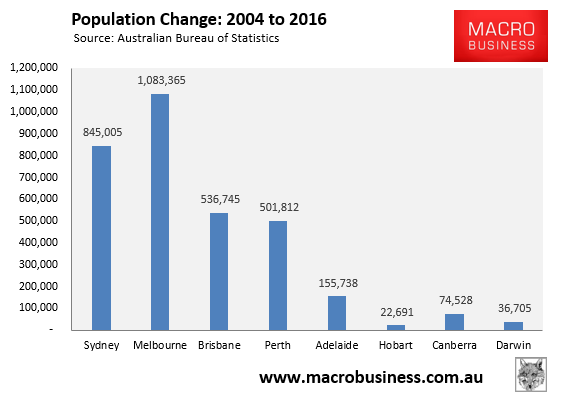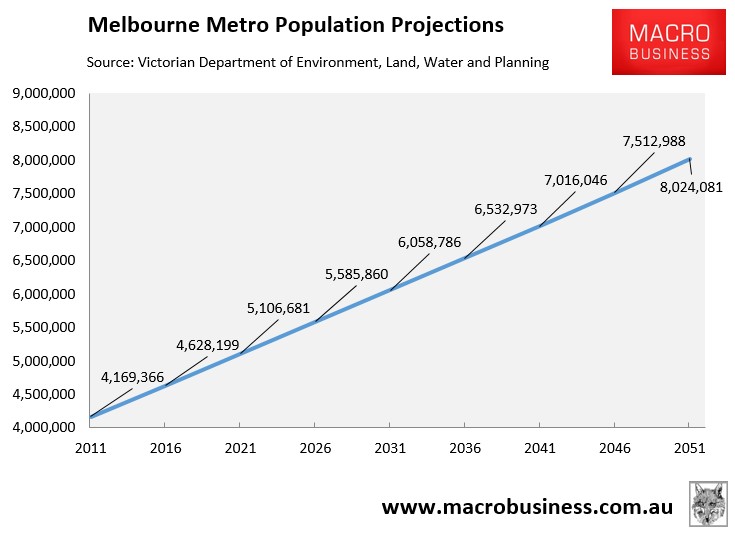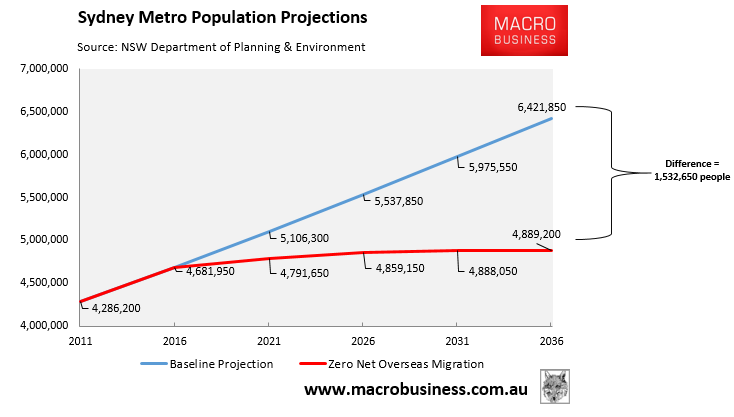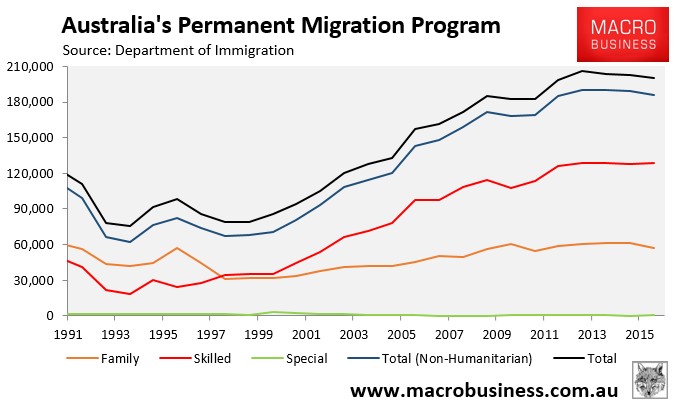Back in July, it was reported that Melbourne’s water storages could dry-up as the combination of climate change meets rapid immigration-fuelled population growth:
Melbourne could begin to experience chronic water shortages within about a decade, even if the desalination plant is cranked up to its full capacity, as climate change and population growth rapidly deplete the city’s dams.
Demand for water could begin to exceed supply by 2028, triggering tough water restrictions and a costly 25 per cent boost to the capacity of the desalination plant, under a worst-case scenario modelled by Melbourne’s water corporations.
This scenario suggests the city must take major steps in the next few years to guard Melbourne’s water storages from reaching dangerously low levels that could put it on a permanent drought footing.
Demand for water in and around Melbourne could grow by about 75 per cent in the next 40 years, while flows into the state’s catchments could decrease by more than 40 per cent, according to projections published this month by City West Water, Yarra Valley Water and South East Water…
Now, Ian Wright – senior lecturer in environmental science at the University of Western Sydney – warns that Australia’s cities will have to turn to costly technical solutions (read desalination plants) to avoid running out of water. From The Conversation:
The increasing thirst of Australia’s biggest cities routinely exceeds our capacity to rely on rainfall for drinking water. Australia is facing a fast-approaching “perfect storm” of growing urban populations and declining rainfall to supply storage reservoirs.
Despite these challenges, our capital cities’ rapid population growth is forecast to continue in coming decades. Sydney, for example, is expected to grow by 1.6 million people in 20 years, but is predicted to be overtaken by Melbourne as the nation’s largest city by then.
How is Australia going to ensure the swelling urban population has enough water? The last two decades provide some important clues…
Desalination and groundwater have come to the rescue…
All water utilities across Australia struggle with increased population growth and extended periods of low rainfall. The Millennium Drought caused widespread problems for all Australian urban water supplies. The levels in major east coast storages shrivelled to the lowest levels in decades…
All of the mainland states have built huge desalination plants, but these come with huge price tags. The Melbourne plant cost about A$4 billion.
Operational costs are enormous, even if the plants sit idle. The Sydney plant’s costs are more than A$500,000 a day, although it has not supplied any water since 2012 as the city’s stored water supply remains higher than 60% of capacity.
Desalination also uses enormous quantities of electricity to extract fresh water from salt water. During his time as NSW premier, Bob Carr referred to desalination as “bottled electricity”. This is important to consider given the power crisis facing eastern Australia…
In the 12 years to 2016, Melbourne’s population ballooned by nearly 1.1 million people (+30%), whereas Sydney’s population surged by around 850,000 (20%):

Moreover, Melbourne’s population is projected to expand by an insane 97,000 people per year (1,865 people per week) for the next 35 years, adding 3.4 million people (+73%) to the city’s population by 2051 – equivalent to 2.5 Adelaide’s:

Whereas Sydney’s population is projected to expand by 87,000 people per year (77,000 via net overseas migration), adding more than 1.7 million people to the city’s population – equivalent to nearly 4.5 Canberra’s:

Clearly, the best and most cost effective way to relieve pressure on our cities’ water supplies and urban infrastructure is for the state governments to lobby the federal government to slash Australia’s mass immigration program back to sensible levels:

Because under the current mass immigration settings, expensive solutions like building more desalination plants will be required over and over again as rapid population growth continually outstrips supply.

